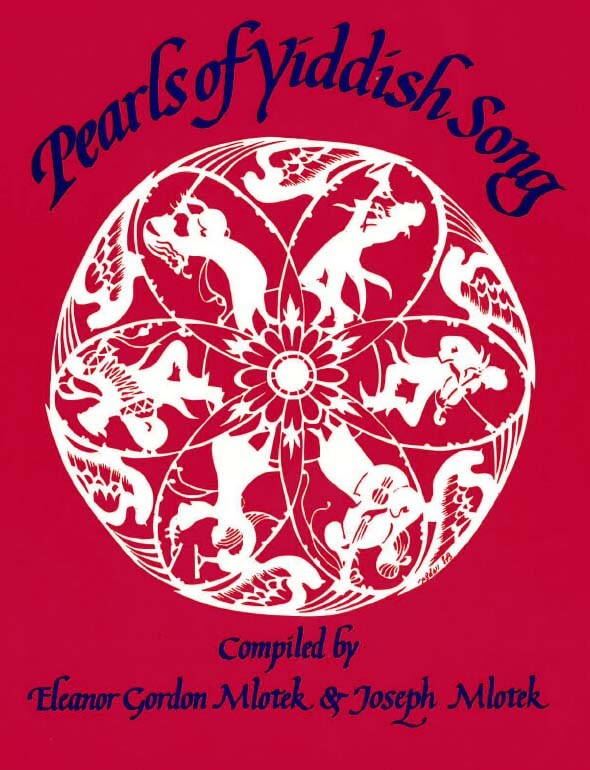Folksong based on the traditional greeting to the Sabbath bride. Published in Yidisher folklor in Vilna in 1938. In that version, the third stanza refers to the Yiddishist and Zionist movements: “Az ikh vel zogn: tsionistn. . . Az ikh vel zogn yidishistn… Yidishistn vert tsionistn; tshiri-birl-bam” (When I say “Zionists”. . . When I say “Yiddishists”. . . Yiddishists become Zionists).
Singers in the United States added the “tshiribim” refrain from the song “Nisim” (Miracles): “Nisim vel ikh aykh dertseyln” (I will tell you of miracles), c.f. Judith Eisenstein, Heritage of Jewish Music.
Part of the opening melody is similar to Abraham Goldfaden’s “Veynt zhe ale tsions tekhter” (Cry, all you daughters of Zion) from his operetta Bar Kokhba.

When I say: “Lekho doydi,” (Heb. Come, my beloved)
you should say: tshiri-biri-bim.
When I say, “Likras kale,” (To meet the bride)
You say: tshiri-biri-bam.
Lekho doydi, tshiri-biri-bim,
Likras kale, tshiri-biri-bam.
Lekho doydi, likras kale,
Tshiri-biri-biri-biri-bam!
Tshiri-bim, tshiri-bam,
Tshiri-bim-bam, bim-bam, biri-bam.
Tshiri-bim, tshiri-bam,
Tshiri-bim-bam, bim-bam, biri-bam.
Ay, tshiri-biri, ay, tshiri-biri,
Ay, tshiri-biri, bim-bam-bam!
When I say: My children
you should say: tshiri-biri-bim.
When I say: Mazl tov to you all!
You say: tshiri-biri-bam.
My children, tshiri-biri-bim,
Mazl-tov to you all, tshiri-biri-bam.
My children, mazl-tov to you all,
Tshiri-biri-biri-biri-bam!
Az ikh vel zogn: lekho doydi,
Zolt ir zogn: tshiri-biri-bim.
Az ikh vel zogn: likras kale,
Zolt ir zogn: tshiri-biri-bam.
Lekho doydi, tshiri-biri-bim,
Likras kale, tshiri-biri-bam,
Lekho. doydi, likras kale,
Tshiri-biri-biri-biri-bam!
Refrain:
Tshiri-bim, tshiri-bam,
Tshiri-biri-bam, bim-bam, biri-bam,
Tshiri-bim, tshiri-bam,
Tshiri-biri-bam, bim-bam, biri-bam,
Ay, tshiri-biri, ay, tshiri-biri,
Ay, tshiri-biri, bim-bam-bam!
Az lkh vel zogn: kinder mayne,
Zolt ir zogn: tshiri-biri-bam,
Az ikh vel zogn: mazl-tov aykh ale,
Zolt ir zogn: tshiri-biri-bam.
Kinderlekh mayne, tshiri-biri-bam,
Mazl-tov aykh ale, tshiri-biri-bam,
Kinderlekh mayne, mazl-tov aykh ale,
Tshiri-biri-biri-biri-bam!
אַז איך װעל זאָגן: לכה דודי,
זאָלט איר זאָגן: טשירי־בירי־בים.
אַז איך װעל זאָגן: לקראת כּלה,
זאָלט איר זאָגן: טשירי־בירי־באַם.
לכה דודי, טשירי־בירי־בים,
לקראת כּלה, טשירי־בירי־באַם,
לכה דודי, לקראת כּלה,
טשירי־בירי־בירי־בירי־באַם.
רעפֿרײן:
טשירי־בים, טשירי־באַם,
טשירי־בים־באַם, בים־באַם, בירי־באַם,
טשירי־בים, טשירי־באַם,
טשירי־בים־באַם, בים־באַם, בירי־באַם.
אײַ, טשירי־בירי, אײַ, טשירי־בירי,
אײַ, טשירי־בירי, בים־באַם־באַם!
אַז איך װעל זאָגן: קינדער מײַנע,
זאָלט איר זאָגן: טשירי־בירי־באַם.
אַז איך װעל זאָגן: מזל־טובֿ אײַך אַלע,
זאָלט איר זאָגן: טשירי־בירי־באַם.
קינדערלעך מײַנע, טשירי־בירי־באַם,
מזל־טובֿ אײַך אַלע, טשירי־בירי־באַם,
קינדערלעך מײַנע, מזל־טובֿ אײַך אַלע,
טשירי־בירי־בירי־בירי־באַם!
Song Title: Az Ikh Vel Zogn “Lekho Doydi”

First published in 1988 as Pearls of Yiddish Song: Favorite Folk, Art and Theatre Songs, this anthology contains 115 songs. Some material had never been published, while others, included in rare song collections or sheet music, were largely inaccessible. The songs presented reflect Jewish life in Eastern Europe and the United States and depict childhood, love, family celebrations, poverty, work and struggle. There are also songs from the Hasidic and Maskilic movements, songs of Zion and of America, as well as songs from the Yiddish theater.
The title of this anthology derives from the weekly two-page feature column “Pearls of Yiddish Poetry,” which the compilers Yosl and Chana Mlotek initiated in 1970 in the Yiddish newspaper Der Forvertz (the Yiddish Daily Forward). Hundreds of readers from around the world — including authors, composers, singers, actors — became co-participants in this collective folk project and recalled melodies, lines, fragments, stanzas and their variants of songs, poems, and plays which they had heard in their youth. At first, readers sent in only written material. Later, they also taped songs on cassettes, many of whose melodies had, until then, never been recorded. They also identified and supplied missing information regarding lyricists, poets, and composers and described the circumstances surrounding the songs’ origins, their dissemination, diffusion and impact.